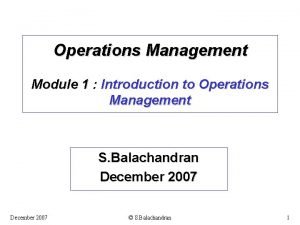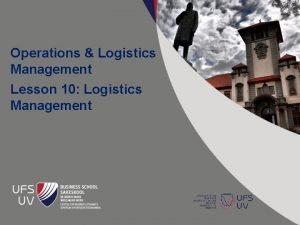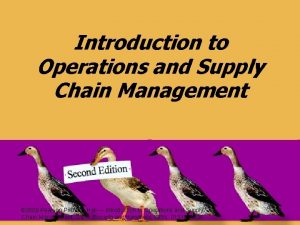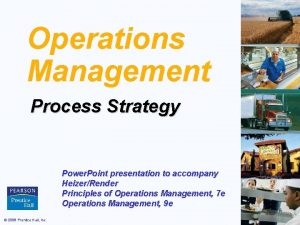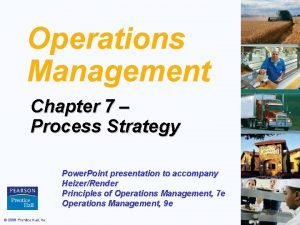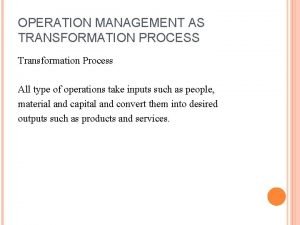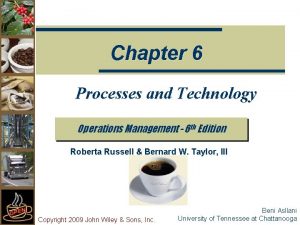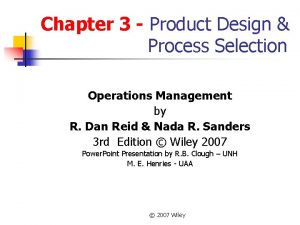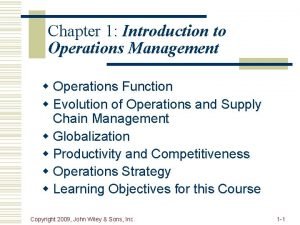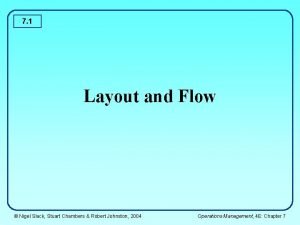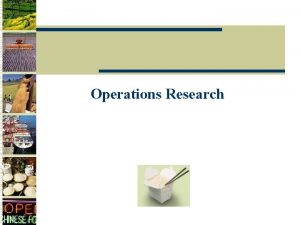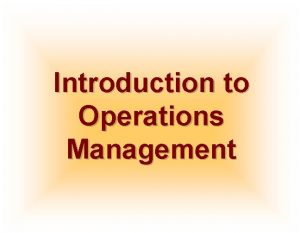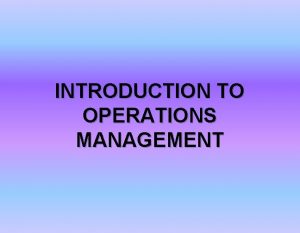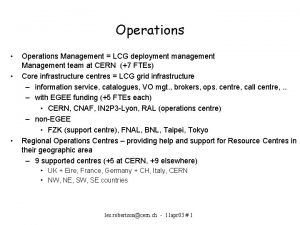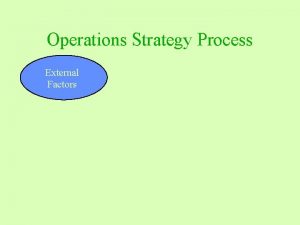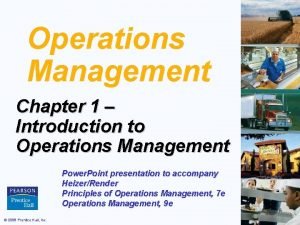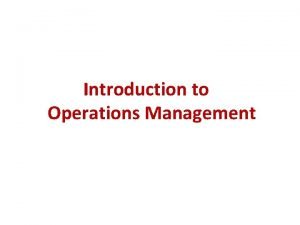OPERATIONS RESEARCH INTRODUCTION TO OPERATIONS RESEARCH Management Process













- Slides: 13

OPERATIONS RESEARCH

INTRODUCTION TO OPERATIONS RESEARCH Management: - Process of making decisions based in the available set of data and suitable assumptions. if any • Examples like • Every management activity is based on decision making process. • Business Success: - Decision Making Ability of managers and executives. • Sucessful Manager: - Mastered the art of decision making while working under situtations of uncertainity • Need to take into account the resource ability of the organization, possible competitive actions by competitors and other micro and macro economic factors.

IMPORTANCE OF DECISION MAKING BECAUSE • Globalization of economy • Increasing competition from local and foreign players. • Dynamic and ever changing business environment • Technological advancement • Importance of protecting the bottom line of the business • Protecting interests of stakeholders • Formation of new partnerships or mergers acquisitions • The process of DM will be more scientific if a manager uses quantitative decision making models.

DEFINITION OF OR • OR deals with quantitative models which can be applied under various problem situations. • It provides manager a quantitative tools for better decision.

METHODOLOGY OF OR • Problem Formulation • Constructing a mathematical model and represent the problem in format of the model • Data Collection • Substituting the data in the model and then solving the model to obtain solution • Interpretation of the solution • Decision making(Accepting, Modifying or rejecting the solution

OR TECHNIQUES Statistical techniques: - These techniques are applied in statistics for data collection , data organization and data anlaysis Eg: - Mean, Median and Mode Mean Deviation and standard deviation Probability theory Regression analysis and correlation analysis Sampling Programming Techniques: - includes problem formulation, building models, substituting data testing model. It includes Linear Programming, Transporation Problems, Assignment Problems, Critical Path Method, Decision theory, Inventory Management.

APPLICATION AREAS FOR OR TECHNIQUES • 1) Production Management • To calculate loss of time due to waiting time, queing time etc. • To decide optimum allocation of jobs and optimum sequence in which jobs should be sequenced. • 2) Personnel Management • To study the labour turnover • To do human resource planning • To deicde number of personnel required to be kept on standyby in case of demand for higher manpower. • 3) Inventory management • To study economic lot size to be ordered. • 4) Marketing management • to deicde the optimal product mix for the maximum profit • Media selection for advertising for the maximum reach. • Sales Forecasting

• 5) Transporation Management • To determine the transportation schedule for minimum cost or minimum time. • 6) Project Management • To indetiffy critical and non critical activities of a project. • To determine minimum project completion time • To determine optimal project cost. • 7) Financial Management • To decide investment portfolio to maximize returns on investment.

LIMITATIONS OF OR • Model will be unrealistic if too many assumptions are taken. • These techniques are quantitative in nature. It cant be applied for intangible and qualitative factors such as customer perceptions, employee motivation levels, quality of executives etc.

LINEAR PROGRAMMING • Techniques for determining how to use limited resources of business to achieve a specified objective such as maximum revenue , Maximum profit , minimum cost minimum time etc. • It is an optimization technique.

TERMINOLGY OF LINEAR PROGRAMMING Decision Variables: Decision variables are entities (eg: - products, services , etc. ) whose values are to be determined from the solution. An optimal solution is the one for which the values of individual variables are such that total profit is maximum or total cost is minimum. The decision variables consume resources hence they compete against each other for sharing the available limited resources. Notation used for decision variables are X 1, X 2, X 3 …etc. If a company manufactures three products-televisions , refrigerators and washing machines then X 1= no. of units of television sets X 2= no. of units of refrigerators X 3=no. of units of washing machines. The decision variables have a linear relationship among themselves and with avialble resources. Linearlity means if the resources are increased by 100% then the production will increase by 100% and hence profit will increase by 100%.

• Objective function • IT specifies the objective of finding the solition to the staeted problem and it is expressed in terms of decision variables. • It can be Max. Z or Min. Z • Coefficinets of decision variables in the objective function represent the profit per unit or cost per unit for each decision variable. • IF profit/unit Tv=Rs. 2000/ • Refrigerator=Rs 3000/ • Washing Machine =Rs 1500/ • Then objective function will be Max. Z=2000 x 1+3000 x 2+1500 x 3

• Constraints: - They are restrictions or limitations imposed on the problem. They are of three types • 1) Less than or equal to< • 2) greater than or equal to >/ • 3) Equal =
 Cara menghitung kriteria laplace
Cara menghitung kriteria laplace Introduction to operations management module
Introduction to operations management module Introduction to operations and supply chain management
Introduction to operations and supply chain management Operation management chapter 1
Operation management chapter 1 Introduction to operations and supply chain management
Introduction to operations and supply chain management What are the four types of process strategies
What are the four types of process strategies Layout strategy
Layout strategy Process strategies operations management
Process strategies operations management Transformation model in operations management
Transformation model in operations management Process technology in operations management
Process technology in operations management Process selection operations management
Process selection operations management Process selection in operations management
Process selection in operations management Operations management transformation process
Operations management transformation process Advantages and disadvantages of fixed position layout
Advantages and disadvantages of fixed position layout

